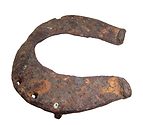Advertise Follow Us
Articles by Simon Curtis
Understanding Hoof Shape
This is an extract from Chapter 3 of The Hoof of the Horse by Simon Curtis
Read More
What Do Horn Tubules Do?
Although farriers know that horn tubules play an important role in hoof wall structure, this article provides a deeper understanding of it
Read More
The Effect of Laterality on Shoeing and Trimming
Horses tend to favor one side over the other, which has implications for hoof care and the farrier
Read More
Book Notes
Filling The Area Between Farrier & Vet
Corrective Farriery: A Textbook Of Remedial Horseshoeing
Read More









